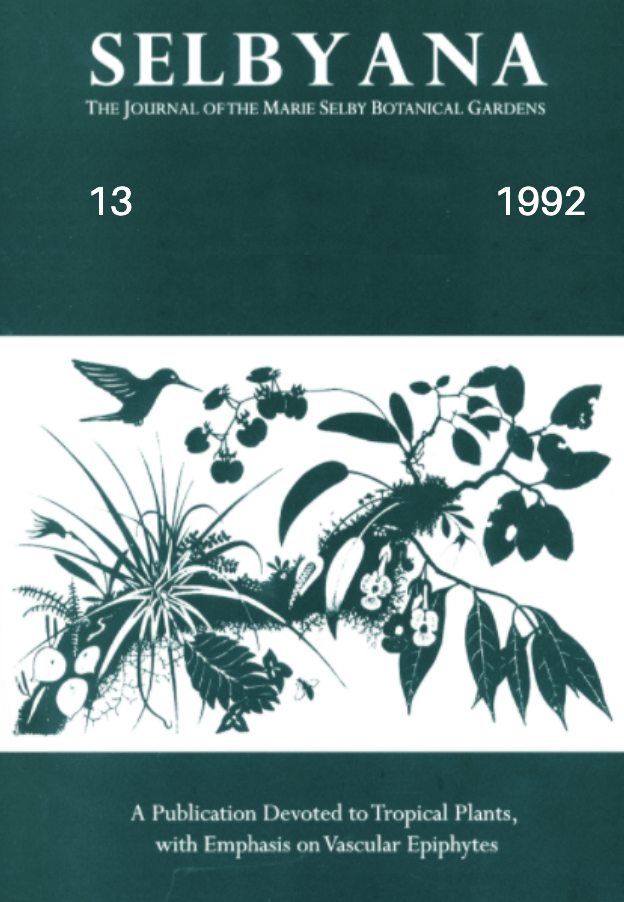Abstract
We studied the association between root gall-forming insects and the epiphytic bromeliad Tillandsia ionantha Planchon in the lowland tropical dry forest ofthe coast ofthe state ofVeracruz, Mexico. Galls are formed by the fly Neolasioptera sp. (Diptera: Cecydomyiidae). The fly has a parasitoid,Aprostocetus sp. (Hymenoptera: Eulophidae). Gall formation takes place during the rainy season, which is the period of root growth in T. ionantha. We collected 4,031 plant individuals in six 5 m x 5 m study plots. Average plant diameter was 4.88 ± 2.8 cm. Average number ofgalls per plant was 1.03 ± 2.1 (N = 4,160). Plants from diameter classes 4.5 to 9.5 cm had the greatest number of galls. There was a positive significant correlation between bromeliad size and number ofgalls per plant. Gall diameter was 0.48 ± 0.1 cm (N = 582). Number of adult insect emergence holes per gall was 5.95 ± 3.4. Most holes were found in gall diameter classes 0.3 to 0.7 cm. There was a positive significant correlation between gall size and number of emergence holes. Our results suggest that parasitism by gall-forming flies is low; nevertheless, galls can be present at any stage in the life ofthe bromeliad. The presence ofgalls in the roots of T. ionantha does not prevent roots from accomplishing their role in plant attachment to substrate; plant individuals were always well-secured to the support tree. Nonetheless, the activity ofthe parasite, which diverts plant nutritive substances with the use ofchemical stimuli, undoubtedly causes deficiencies during development that may decrease plant reproductive fitness.
Open Access and Copyright Notice
Selbyana is committed to real and immediate open access for academic work. All of Selbyana's articles and reviews are free to access immediately upon publication. There are no author charges (APCs) prior to publication, and no charges for readers to download articles and reviews for their own scholarly use. To facilitate this, Selbyana depends on the financial backing of the Marie Selby Botanical Gardens, the hard work and dedication of its editorial team and advisory board, and the continuing support of its network of peer reviewers and partner institutions.
Authors are free to choose which open license they would like to use for their work. Our default license is the Creative Commons Attribution-NonCommercial 4.0 (CC BY-NC 4.0). While Selbyana’s articles can be copied by anyone for noncommercial purposes if proper credit is given, all materials are published under an open-access license with authors retaining full and permanent ownership of their work. The author grants Selbyana a perpetual, non-exclusive right to publish the work and to include it in other aggregations and indexes to achieve broader impact and visibility.
Authors are responsible for and required to ascertain that they are in possession of image rights for any and all photographs, illustrations, and figures included in their work or to obtain publication or reproduction rights from the rights holders. Contents of the journal will be registered with the Directory of Open Access Journals and similar repositories. Authors are encouraged to store their work elsewhere, for instance in institutional repositories or personal websites, including commercial sites such as academia.edu, to increase circulation (see The Effects of Open Access).
